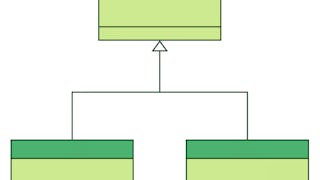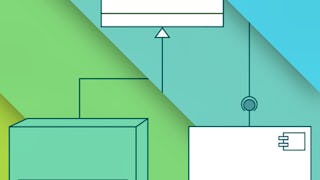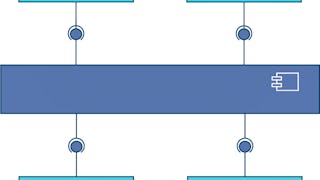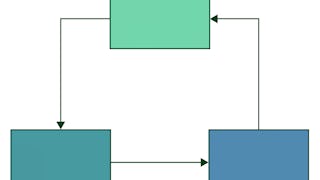The way that software components — subroutines, classes, functions, etc. — are arranged, and the interactions between them, is called architecture. In this course you will study the ways these architectures are represented, both in UML and other visual tools. We will introduce the most common architectures, their qualities, and tradeoffs. We will talk about how architectures are evaluated, what makes a good architecture, and an architecture can be improved. We'll also talk about how the architecture touches on the process of software development.

Saving $160 on access to 10,000+ programs is a holiday treat. Save now.


Software Architecture
This course is part of Software Design and Architecture Specialization

Instructor: Kenny Wong
76,275 already enrolled
Included with 
(934 reviews)
Skills you'll gain
Details to know

Add to your LinkedIn profile
See how employees at top companies are mastering in-demand skills

Build your subject-matter expertise
- Learn new concepts from industry experts
- Gain a foundational understanding of a subject or tool
- Develop job-relevant skills with hands-on projects
- Earn a shareable career certificate

There are 4 modules in this course
In this module you will learn about software architecture. You will learn why architecture is important, what perspectives need to be considered, and how to communicate architecture using UML.
What's included
6 videos8 readings1 assignment2 peer reviews
Software comes in all shapes and sizes. The architecture you choose will affect every part of your software, from its security and efficiency, to its modularity and maintainability. In this module we will examine the different architectures that you have to choose from to shape your software.
What's included
9 videos3 readings1 assignment
The architecture is the most fundamental aspect of software. You will learn how development teams describe architectures, plan successful architectures based on quality attributes, and evaluate the resulting architecture. You will also learn how architecture relates to organization structure and even product planning!
What's included
4 videos1 assignment
Now, in the final module of the course, you will evaluate the proposed architecture to extend the functionality of the example Android code base.
What's included
4 readings1 assignment1 peer review
Earn a career certificate
Add this credential to your LinkedIn profile, resume, or CV. Share it on social media and in your performance review.
Instructor

Offered by
Explore more from Software Development
 Status: Free Trial
Status: Free TrialUniversity of Alberta
 Status: Free Trial
Status: Free TrialUniversity of Alberta
 Status: Free Trial
Status: Free TrialUniversity of Alberta
 Status: Free Trial
Status: Free TrialUniversity of Alberta
Why people choose Coursera for their career




Learner reviews
934 reviews
- 5 stars
69.09%
- 4 stars
20.21%
- 3 stars
5.66%
- 2 stars
2.35%
- 1 star
2.67%
Showing 3 of 934
Reviewed on Jul 14, 2021
This is a very very excellent course of which I've ever taken & would like to recommend it to my friends to expore.
Reviewed on Jul 22, 2018
Very comprehensive course, but in my opinion it lacks some updates in terms of new concepts like serverless architecture and cloud in general.
Reviewed on Jan 10, 2021
This was a very insightful and interesting course which gave a deep and thorough knowledge of all aspects of Software architecture. Very well designed. Thanks

Open new doors with Coursera Plus
Unlimited access to 10,000+ world-class courses, hands-on projects, and job-ready certificate programs - all included in your subscription
Advance your career with an online degree
Earn a degree from world-class universities - 100% online
Join over 3,400 global companies that choose Coursera for Business
Upskill your employees to excel in the digital economy
Frequently asked questions
To access the course materials, assignments and to earn a Certificate, you will need to purchase the Certificate experience when you enroll in a course. You can try a Free Trial instead, or apply for Financial Aid. The course may offer 'Full Course, No Certificate' instead. This option lets you see all course materials, submit required assessments, and get a final grade. This also means that you will not be able to purchase a Certificate experience.
When you enroll in the course, you get access to all of the courses in the Specialization, and you earn a certificate when you complete the work. Your electronic Certificate will be added to your Accomplishments page - from there, you can print your Certificate or add it to your LinkedIn profile.
Yes. In select learning programs, you can apply for financial aid or a scholarship if you can’t afford the enrollment fee. If fin aid or scholarship is available for your learning program selection, you’ll find a link to apply on the description page.
More questions
Financial aid available,
¹ Some assignments in this course are AI-graded. For these assignments, your data will be used in accordance with Coursera's Privacy Notice.

